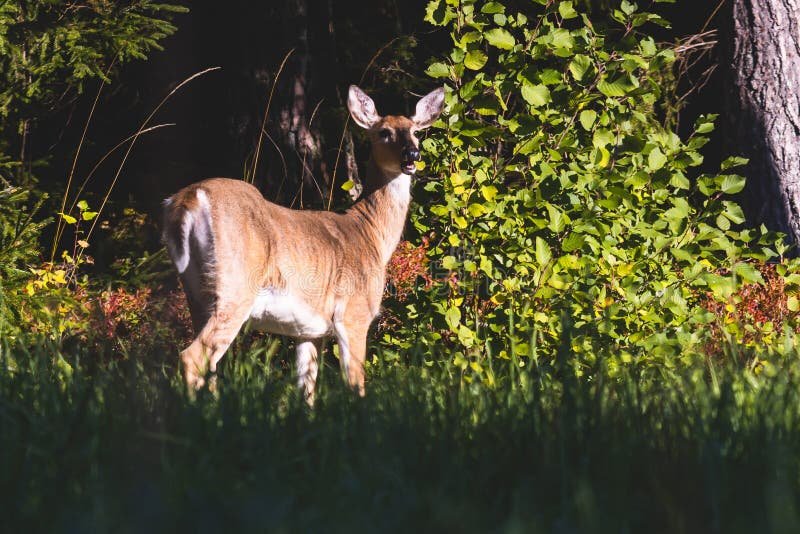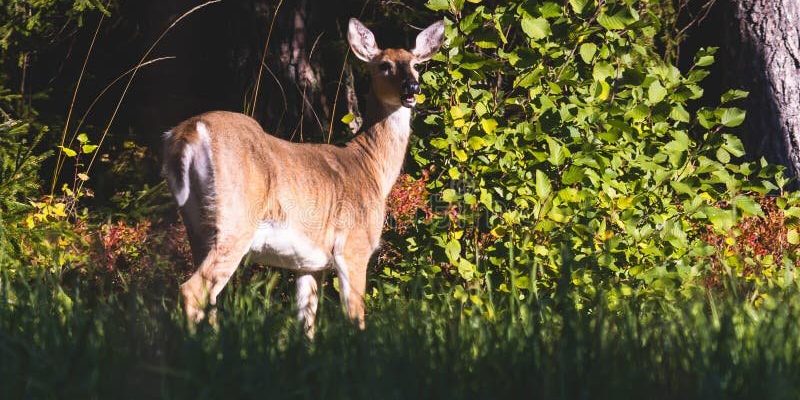
Raising young in the wilderness is no easy task. White-tailed deer mothers, called does, face numerous challenges from predators to environmental conditions. Think of it as a delicate dance, where each step must be calculated to keep their offspring out of harm’s way. In this article, we’ll dive into the various ways these incredible animals care for their young, from nurturing during the first weeks of life to teaching them survival skills.
Understanding the Gestation Period
Before fawns even make their debut, there’s a fascinating process that happens during the doe’s pregnancy. The gestation period for a white-tailed deer lasts about six and a half months. Imagine carrying around a little bundle of joy for that long—it’s all part of the experience! During this time, the doe focuses on finding nutritious food, which is essential not just for her but for the growing fawn.
As the days progress, does often seek out quiet, secluded areas to give birth. This instinctual drive to find a safe spot is crucial; it helps protect the fawn from potential threats. Think about it: if you were going to have a baby in the wild, you wouldn’t want noisy distractions or curious predators around.
Once the fawn is ready to make its entrance into the world, the doe will clean it off and encourage it to stand up and walk within just a few hours. This quick action is vital—being mobile increases the fawn’s chances of survival by getting it out of harm’s way.
Protective Instincts of the Doe
The moment a fawn is born, it enters a world full of challenges, and the doe’s protective instincts kick into high gear. One of the most critical aspects of raising her young is keeping them safe from predators like coyotes, bobcats, and even larger birds of prey. The doe remains vigilant and often stands watch, scanning the area for any signs of danger.
Interestingly, does will sometimes employ a strategy where they hide their fawns in dense cover while they forage for food. This behavior resembles playing hide-and-seek, as the fawn will remain still, relying on their spotted coat for camouflage among the tall grasses and leaves. You might be wondering how a tiny creature can cope in such a big world—this clever hiding strategy gives them a fighting chance.
Additionally, the mother often waits to nurse her young until she feels it is safe. This means the fawn might have to wait patiently, but it’s all part of the survival game. The doe knows that keeping her fawn hidden is more important than satisfying immediate hunger.
Nourishment and Nursing
Once the fawn is out in the open and settled, feeding is a major focus. Does typically nurse their fawns several times a day, providing them with high-quality, protein-rich milk that aids in their rapid growth. This milk is packed with essential nutrients, much like how a good breakfast sets us up for the day.
During the first week or so, a fawn might stay close to the mother, learning to recognize her scent and sounds. This bonding time is crucial. The doe uses gentle nudges and calls to guide her fawn as it learns about the world around it. You could say it’s their version of a crash course in survival—or perhaps a gentle introduction to life.
Eventually, as the fawn grows, it will start to munch on grass and shrubs, but it will still rely heavily on the doe’s milk for sustenance during the early months. This gradual shift from nursing to foraging is key; it allows the fawn to develop its digestive system while still enjoying the benefits of its mother’s milk.
Teaching Survival Skills
As the fawns mature, their mothers take on the vital role of teachers. You might picture this as a classroom, but instead of desks and chairs, it’s filled with open fields and forest trails. Does lead their young through various landscapes, teaching them how to find food and stay hidden from predators.
The fawn learns to recognize potential threats and how to respond. For instance, when it hears rustling in the bushes or sees an unfamiliar animal, the doe demonstrates the appropriate behavior—whether that means freezing in place or quietly moving away. It’s a bit like a dance, where timing and instinct are everything.
This teaching phase is essential for the fawn’s growth. The more exposure they get under their mother’s watchful eyes, the better equipped they’ll be once they venture out on their own. Just like a parent preparing their child for the real world, the doe prepares her fawn for the challenges of life in the wild.
Bonding and Social Structure
Bonding is crucial between a doe and her fawns. In the wild, social structures matter deeply among white-tailed deer. They often live in small groups, which helps with protection and social learning. When a doe has multiple fawns, she teaches them not only individual survival skills but also how to navigate their relationships with others in the group.
Fawns spend their early months primarily with their mothers, but they also observe and interact with other deer. This social interaction is beneficial as it helps them develop important social skills. Imagine a fawn playing and frolicking with its siblings—this is as much a part of the learning experience as any lesson on foraging.
Once the fawns reach about six months old, they become more independent and begin mixing with peers. They might start playing together and learning from one another, but their mother will still keep an eye on them, ensuring they don’t wander too far. This blend of independence and guidance is key to their development.
Challenges in Raising Fawns
Despite the incredible efforts of does, raising fawns in the wild doesn’t come without significant challenges. Environmental factors like extreme weather, food scarcity, and human encroachment on habitats can all pose risks. For instance, heavy rainfall can make it difficult for fawns to find dry places to stay, increasing their vulnerability to predators.
Additionally, does face threats from human activities, such as hunting or vehicle collisions. These factors can put stress on the population, which in turn affects how well a doe can raise her young. Think of it like a tightrope walk—one little slip can have devastating consequences.
While nature has its way of balancing ecosystems, the survival of white-tailed deer depends on a healthy environment. Conservation efforts play a crucial role in ensuring these iconic creatures can carry on their legacy of raising young in the wild.
The Cycle Continues
As fawns grow into adults, they eventually leave their mothers and become independent members of the deer community. This transition marks an essential part of the life cycle: each generation learns, adapts, and thrives in a world filled with challenges. For does, it’s bittersweet to see their fawns go, but it’s also a natural part of life in the wild—much like watching your kids grow up and set off on their own adventures.
Each year, as spring arrives, new fawns are born, and the cycle begins anew. The efforts of the does ensure that these young deer will have a fighting chance to grow, explore, and thrive just as their mothers did before them.
In conclusion, the way white-tailed deer raise their young is a testament to their resilience and adaptability in the wild. From gestation to teaching survival skills, every step is carefully crafted by nature. So next time you spot a doe in the wild, take a moment to appreciate the hard work and dedication involved in raising fawns—it’s a beautiful, intricate dance of life.

